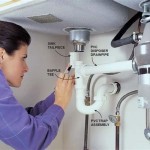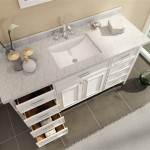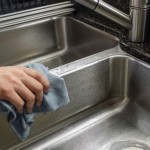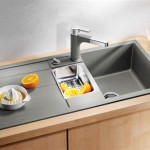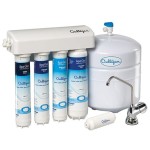```html
Drilling A Stainless Steel Sink: A Comprehensive Guide
Drilling a stainless steel sink is a common task encountered in plumbing, remodeling, and DIY projects. Whether installing a new faucet, soap dispenser, or other accessory, understanding the proper techniques and tools is crucial to achieving a clean, professional-looking result without damaging the sink. Stainless steel, while durable, can be susceptible to scratches, dents, and deformation if mishandled. This article provides a comprehensive guide to drilling a stainless steel sink safely and effectively.
Essential Tools and Materials
Success in drilling stainless steel heavily relies on having the right tools and materials. Using the appropriate equipment minimizes the risk of damage and ensures a clean, precise hole. This section outlines the essential components needed for the task.
Drill: A variable-speed drill is indispensable. The ability to control the drill's speed is critical to prevent overheating and work hardening of the stainless steel. Cordless drills offer greater flexibility but ensure the battery is fully charged before starting the project. A corded drill provides consistent power, which is advantageous for larger or more complex holes.
Drill Bits: Selecting the correct drill bit is paramount. High-speed steel (HSS) drill bits with a cobalt or titanium coating are recommended for drilling stainless steel. These coatings increase the bit's hardness and heat resistance, allowing it to cut through the material more effectively. Step drill bits, also known as unibits, are another excellent option. They are designed to create holes of varying sizes, offering versatility and reducing the need to switch between multiple drill bits. Step drill bits also tend to create cleaner, more precise holes in sheet metal like stainless steel.
Center Punch and Hammer: A center punch is used to create a small indentation at the precise location where the hole is desired. This indentation prevents the drill bit from wandering or skating across the surface of the stainless steel, ensuring accurate placement of the hole. A hammer is used to tap the center punch firmly.
Cutting Fluid: Cutting fluid, also known as cutting oil or lubricant, is essential for reducing friction and heat during the drilling process. It helps to keep the drill bit cool, prevents work hardening, and extends the life of the bit. Various cutting fluids are available, including those specifically formulated for stainless steel. WD-40 can be used as a readily available alternative, although dedicated cutting fluid offers superior performance.
Clamps: Clamps are crucial for securing the sink to a stable surface. This prevents the sink from moving or vibrating during drilling, which can lead to inaccurate holes and potential damage. C-clamps or similar clamping devices are suitable for this purpose.
Safety Glasses: Safety glasses are non-negotiable. Drilling stainless steel can produce sharp metal shavings that can be hazardous to the eyes. Wearing safety glasses protects the eyes from these projectiles.
Gloves: Gloves protect the hands from sharp edges and metal debris. Leather or work gloves provide adequate protection and grip.
Marking Pen: A permanent marker or felt-tip pen is used to clearly mark the desired location of the hole on the sink's surface. Precise marking is essential for accurate drilling.
Deburring Tool or File: After drilling, a deburring tool or file is used to remove any sharp edges or burrs around the newly drilled hole. This prevents injury and ensures a smooth, finished appearance.
Step-by-Step Drilling Procedure
Following a well-defined procedure is key to successfully drilling a stainless steel sink. Each step contributes to a clean, accurate, and damage-free result. This section outlines the recommended drilling procedure.
Preparation: Begin by thoroughly cleaning the area where the hole will be drilled. Remove any dirt, grease, or debris that could interfere with the drilling process. Use a degreaser or mild soap and water to clean the surface, then dry it completely.
Marking the Hole: Accurately determine the location of the hole and mark it clearly with a permanent marker. Double-check the placement to ensure it aligns with the requirements of the faucet, soap dispenser, or other accessory being installed.
Creating an Indentation: Place the tip of the center punch on the marked spot. Firmly tap the end of the center punch with a hammer to create a small indentation. This indentation will serve as a guide for the drill bit, preventing it from wandering.
Securing the Sink: Secure the sink to a stable surface using clamps. Ensure the sink is firmly held in place to prevent movement during drilling. Place a piece of wood or cardboard underneath the sink to protect the underlying surface from scratches or damage.
Starting the Drilling Process: Begin drilling with a slow speed. Apply a small amount of cutting fluid to the marked area and the drill bit. Hold the drill firmly and apply gentle, consistent pressure. Avoid forcing the drill bit, as this can cause it to overheat and break.
Maintaining Slow Speed and Lubrication: Throughout the drilling process, maintain a slow and steady drill speed. Regularly apply cutting fluid to the drill bit and the hole being drilled. This helps to keep the bit cool and prevents work hardening of the stainless steel. If the drill bit starts to squeal or smoke, stop drilling immediately and allow it to cool down before continuing.
Increasing Drill Bit Size (If Necessary): If the desired hole size requires the use of multiple drill bits, gradually increase the size of the drill bit. Start with a small pilot hole and then progressively increase the size until the desired diameter is reached. This approach minimizes the risk of chipping or cracking the stainless steel.
Finishing the Hole: As the drill bit breaks through the back of the sink, reduce the pressure to prevent the bit from snagging or tearing the metal. Drill slowly and carefully until the hole is completely through the stainless steel.
Deburring the Hole: After drilling, use a deburring tool or file to remove any sharp edges or burrs around the hole. This will create a smooth, safe, and professional-looking finish. Clean the area thoroughly to remove any metal shavings or debris.
Preventing Common Problems
Several common problems can arise when drilling stainless steel. Understanding these potential issues and taking preventative measures is essential for a successful outcome. This section highlights common problems and offers solutions.
Work Hardening: Work hardening occurs when stainless steel is subjected to excessive heat and friction during drilling. This makes the metal harder and more difficult to cut, often leading to broken drill bits. To prevent work hardening, use a slow drill speed, apply plenty of cutting fluid, and avoid excessive pressure.
Drill Bit Breakage: Drill bits can break if they are overheated, forced, or used at an incorrect angle. To prevent drill bit breakage, use high-quality drill bits designed for stainless steel, maintain a slow drill speed, apply cutting fluid liberally, and avoid applying excessive pressure. Ensure the drill bit is aligned properly and is perpendicular to the surface being drilled.
Scratching or Denting the Sink: Stainless steel sinks are susceptible to scratches and dents during drilling. To prevent damage, use clamps to secure the sink to a stable surface, protect the surrounding area with cardboard or padding, and avoid dropping tools or applying excessive force.
Inaccurate Hole Placement: Inaccurate hole placement can result in misaligned fixtures and an unprofessional appearance. To ensure accurate hole placement, carefully measure and mark the desired location before drilling. Use a center punch to create an indentation that will guide the drill bit. Double-check the placement before starting the drilling process.
Burrs and Sharp Edges: Drilling stainless steel often creates burrs and sharp edges around the hole. These can be hazardous and detract from the finished appearance. To remove burrs and sharp edges, use a deburring tool or file after drilling. Clean the area thoroughly to remove any metal shavings.
By following these guidelines and taking the necessary precautions, drilling a stainless steel sink can be a straightforward and successful task. The key is to use the right tools, follow a well-defined procedure, and be mindful of potential problems.
```
Drilling Large Holes In Stainless Steel The Easy Way

Top Tips For Drilling Holes In Stainless Steel Sinks Bsp Diamond Tools Manufacturer

How To Drill Hole In Stainless Steel Sink Step By Youtube

How To Drill Hole Any Sink Easy Simple Youtube

Top Tips For Drilling Holes In Stainless Steel Sinks Bsp Diamond Tools Manufacturer

How To Drill A Hole In Stainless Steel Sink Simple Easy

How To Drill A Tap Hole On Stainless S Bunnings Work Community

How To Make A Hole In Stainless Steel Sink

How To Cut A Hole In Kitchen Sink

Drilling Stainless Steel Best Drill Bits For
